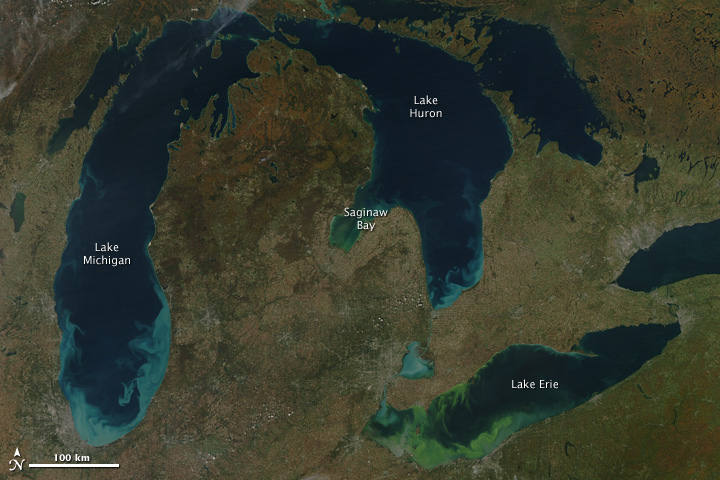
Tiny blue-green algae brought Toledo, Ohio’s municipal water system to a halt this summer. Toxic blooms left residents scrambling for bottled water to meet their drinking, cooking, and washing needs.
Dense, toxin-producing blue-green algae are relatively rare. Processes used in water treatment – such as chlorination and activated charcoal – remove most of their poisons. Livestock, wildlife, and dogs are more vulnerable because they are more likely to drink untreated water from lakes and ponds experiencing blooms.
Toledo’s problem likely arose due to a failure to manage Lake Erie and its surrounding landscape. Blue-green algae thrive in warm, nutrient-rich water. Much of the land around Toledo is used to grow crops and livestock. Runoff from these operations, along with sewage from Toledo and Detroit, fuels the growth of noxious blue-green algae during warm weather.
Unfortunately, water supplies polluted with toxic blue-green algae are likely to become more common, and we are on the path to read more stories like the one from Toledo. Already, many lakes and rivers, including New York’s Hudson River, are rich in nutrients from farm fertilizer, sewage, and other sources. And we all know that the planet is warming.
Studies conducted by the Cary Institute of Ecosystem Studies have found that that the amount of blue-green algae in the Hudson River increases from essentially zero in cool summers to more than half of all algae in warm summers.
Turning the tide on blue-green algae in the Hudson and other waters around the world must rely on watershed management that minimizes nutrient-pollution to freshwaters.
**********
This story was adapted from an essay written by Cary Institute freshwater ecologist David Strayer.
.
Web Links
Toxic algae can put water sources at risk
Photo, posted October 13, 2011, courtesy of NASA Goddard Space Flight Center via Flickr.
.
Earth Wise is a production of WAMC Northeast Public Radio, with script contribution from the Cary Institute of Ecosystem Studies.